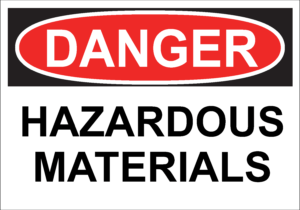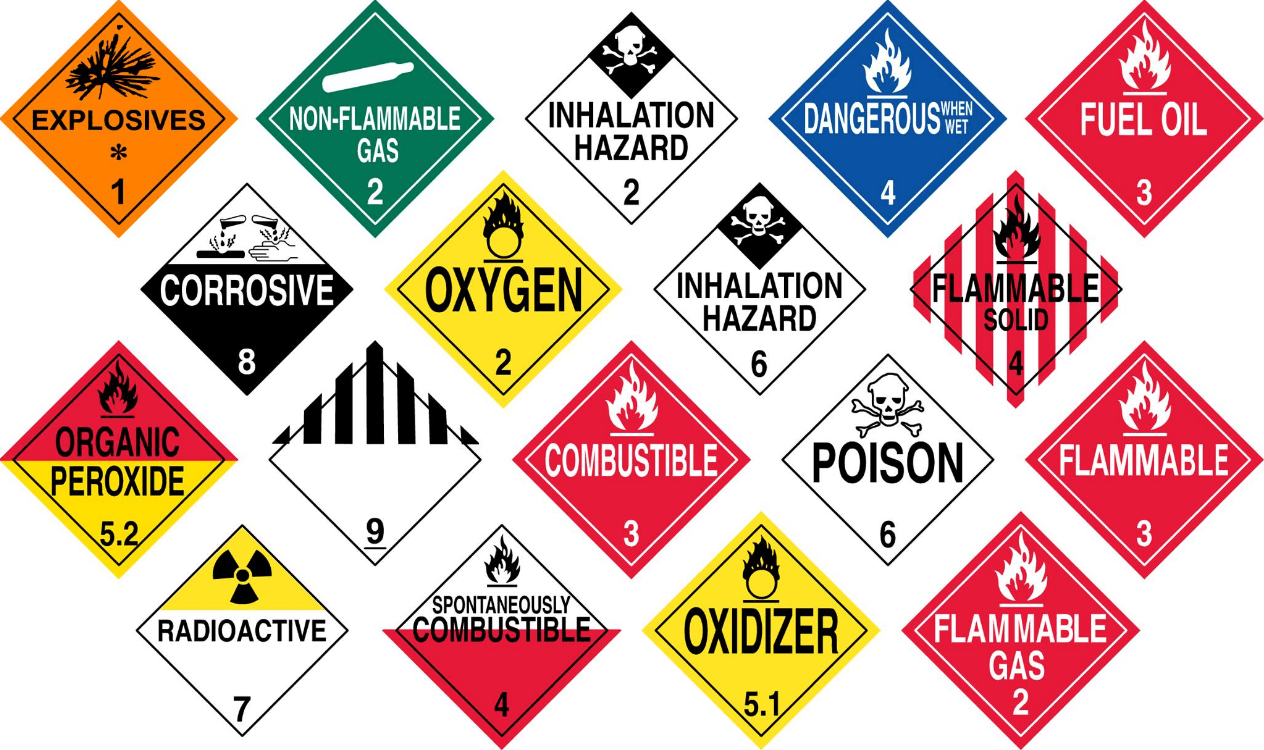Hazmat Training Transporters Compliance Critical for Safety
On Feb. 3rd, a chemical spill incident occurred in Ohio. This event brings to mind a much more global conversation surrounding hazardous materials (hazmat) compliance. Tragedies such as this serve as a harsh reminder to hazmat professionals and civilians alike that hazardous materials pose a threat to any mode of transport, in non-bulk or bulk shipments. The incident in question involved a bulk shipment of hazardous materials that leaked and led to the evacuation of nearby residents.

Hazmat transportation regulations exist to ensure the safe and secure transportation of hazardous materials, regardless of the mode of transport.
The repercussions of this unfortunate incident will be felt by that community for years and even decades to come, which highlights the incredible importance of complying with hazmat regulations to prevent such accidents from occurring. Hazmat transportation regulations exist to ensure the safe and secure transportation of hazardous materials, regardless of the mode of transport. Whether it’s non-bulk or bulk shipments, the results of an unintentional release of hazardous materials can be catastrophic.
The Importance of Proper Labeling and Packaging in Hazardous Materials Transportation
One critical aspect of hazmat compliance is proper labeling and packaging of hazardous materials. Hazmat labels and markings must be visible and clearly communicate the type of material being transported, the hazard class, and any special handling requirements.
Enjoying our insights?
Subscribe to our newsletter to keep up with the latest industry trends and developments.
Stay InformedProper labeling and packaging methods for hazardous material transportation are critical for avoiding hazmat incidents because they ensure that everyone involved in the transportation process is aware of the potential risks and takes the necessary precautions.
Labels and markings provide information about the type of hazardous material being transported, its physical and chemical properties, and the associated hazards. This information helps those handling the material to take the necessary steps to prevent accidents, such as avoiding incompatible materials, using the correct protective equipment, and taking appropriate emergency measures in case of spills or leaks.
The Role of Packaging in Hazmat Transportation Safety

By ensuring that hazardous materials are properly labeled and packaged, the risk of accidents and incidents is significantly reduced, protecting the health and safety of everyone involved in the transportation process.
Additionally, proper packaging ensures that any hazardous materials are contained and protected during transportation. This helps prevent spills, leaks and other incidents that could potentially harm people, property and the environment. Adequate packaging also helps to prevent the material from becoming damaged or contaminated, which could lead to the material becoming more hazardous or difficult to handle.
By ensuring that hazardous materials are properly labeled and packaged, the risk of accidents and incidents is significantly reduced, protecting the health and safety of everyone involved in the transportation process.
Ongoing Online Hazmat Training for Compliance with Hazardous Materials Regulations
In addition to labeling and packaging, hazmat transportation requires specialized training for employees involved in the handling, loading and unloading of hazardous materials. Hazmat training ensures that employees understand the regulations, safety procedures, and emergency response protocols in the event of an accident.
Compliance with hazmat transportation regulations is critical to ensure the safety of employees, the public and the environment. Failure to comply with hazmat regulations can result in costly fines, legal liability and reputational damage for companies.
The Importance of Continuous Hazmat Education

The transportation of hazardous materials is a complex and constantly evolving process that requires specialized knowledge and skills.
The transportation of hazardous materials is a complex and constantly evolving process that requires specialized knowledge and skills. Ongoing training and education help to keep everyone involved in the transportation process informed about new developments, changes in regulations, and emerging risks, enabling them to adapt their practices accordingly and avoid potential hazards.
Moreover, ongoing training and education help to reinforce safe behaviors and best practices, improving overall safety culture and reducing the likelihood of incidents. By providing regular training, employers can help employees to develop a deeper understanding of the risks associated with hazardous materials and equip them with the necessary knowledge and skills to handle them safely. This can help to prevent complacency and reinforce good habits, reducing the risk of human error and accidents.
Utilizing Online Hazmat Training Resources
Online hazmat training courses, such as those offered by Hazmat University, provide a convenient and accessible option for employees to stay up-to-date with the latest hazardous materials regulations and best practices. These courses can be taken at the employees’ own pace, making it easier for them to balance their work schedules with their ongoing education. In addition, online hazmat training resources can be easily updated to reflect changes in regulations or emerging risks, ensuring that employees always have access to the most current information.
Stay Competent, Confident, and Compliant with Hazmat University

By following hazmat regulations and compliance requirements, transporters can help to protect the public, property, and environment from unnecessary risks associated with hazardous materials transport.
Adherence to hazmat regulations and compliance requirements enables transporters to minimize risks associated with hazardous materials transport, safeguarding the public, property, and the environment.
“At Hazmat University, our goal is to provide comprehensive hazmat training that prepares employees for any situation involving hazardous materials. Our interactive courses cover a variety of topics, including proper labeling and packaging, hazard identification, shipping papers, emergency response, security, and much more.
Join Hazmat University for Comprehensive Training
“We invite you to join us in marching into compliance by taking advantage of our Hazmat Training services. With the right tools and knowledge in place, we can ensure that all hazmat shipments are transported safely and securely. Everyone’s goal must be to make sure through compliance accidents like these never happen again.’’
Hazmat University is a program sponsored by the Bureau of Dangerous Goods. Further information can be obtained by calling (844) 307-8345 or (609) 493-4980.
Stay Informed and Compliant with Tank Transport
For more information on hazmat regulations, industry news, and updates, visit Tank Transport Hazmat section. Stay informed and compliant with the latest information and resources to help you navigate the ever-changing landscape of hazardous materials transportation.

Proper hazmat training for transporters and compliance with hazardous materials regulations are crucial in ensuring the safety and security of all parties involved in the transportation process
In conclusion, proper hazmat training for transporters and compliance with hazardous materials regulations are crucial in ensuring the safety and security of all parties involved in the transportation process. By investing in ongoing education, proper labeling and packaging, and adhering to safety procedures, transporters can significantly reduce the risk of accidents and incidents, protecting both people and the environment.
Here are some links to resources that can provide more information on hazmat training, transportation, and compliance:
- U.S. Department of Transportation – Pipeline and Hazardous Materials Safety Administration (PHMSA): https://www.phmsa.dot.gov/
- Occupational Safety and Health Administration (OSHA) – Hazardous Materials: https://www.osha.gov/hazmat
- Environmental Protection Agency (EPA) – Hazardous Waste: https://www.epa.gov/hw
- International Air Transport Association (IATA) – Dangerous Goods Regulations: https://www.iata.org/en/programs/cargo/dgr/
- International Maritime Organization (IMO) – International Maritime Dangerous Goods Code: http://www.imo.org/en/OurWork/Cargo/DangerousGoods/Pages/Default.aspx
- Code of Federal Regulations (CFR) – Title 49: Transportation, Hazardous Materials Regulations: https://www.ecfr.gov/current/title-49/subtitle-B/chapter-I
- Transport Canada – Transportation of Dangerous Goods Regulations: https://www.tc.gc.ca/eng/tdg/clear-tofc-211.htm
These resources cover various aspects of hazardous materials regulations, training, and transportation safety. By exploring these resources, you can learn more about the best practices and requirements for handling and transporting hazardous materials.




















